Birds
Media

Species Types
Scientific Name
Ardea herodias
Description
This large, graceful, blue-gray bird with a black, plumed eye line has long legs for wading and a slender neck and spearlike bill for catching fish.
Media
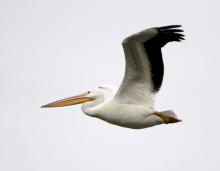
Species Types
Scientific Name
Pelecanus erythrorhynchos
Description
Graceful in flight, ungainly on land, and elegant on the water, the American white pelican is one of the largest birds in Missouri.
Media
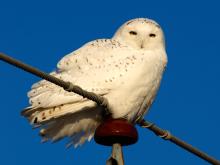
Species Types
Scientific Name
Nyctea scandiaca
Description
Snowy owls visit Missouri during some winters and not others. Their numbers peak here about every four years due to a lack of space for territories after a very successful breeding season.
Media
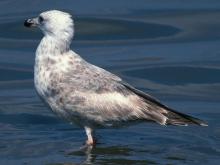
Species Types
Scientific Name
Larus argentatus
Description
Herring gulls are one of the three most common gulls found in Missouri. Adults can be told from our other common gulls by their pinkish legs and yellow bill with a small red dot near the tip.
Media
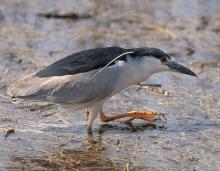
Species Types
Scientific Name
Nycticorax nycticorax
Description
Stocky and short-legged compared to other herons, the black-crowned night-heron has a black crown and back, gray wings, and whitish-gray underparts and head.
Media

Species Types
Scientific Name
Pandion haliaetus
Description
Osprey, also called fish hawks or fish eagles, used to be more common in our state, but their numbers are increasing. Keep an eye out for them, especially around reservoirs and during spring and fall migration, as reintroduction efforts are paying off!
Media

Species Types
Scientific Name
Cygnus buccinator
Description
The trumpeter swan is the largest waterfowl species in North America. It has been absent from the state throughout most of the 20th century, but today occurs as migrants and overwinters in our state.
Media
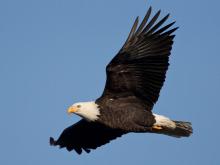
Species Types
Scientific Name
Haliaeetus leucocephalus
Description
Our national symbol, the mature bald eagle is unmistakable with its dark brown body, yellow bill, and white head and tail. It soars with wings held flat and can have a 7-foot wingspan.
Media

Species Types
Scientific Name
Anas acuta
Description
A dabbling duck named for its long, tapered tail, the northern pintail is a common migrant in Missouri. Like other dabblers, it can leap into flight right from the surface of the water.
Media
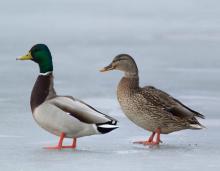
Species Types
Scientific Name
Anas platyrhynchos
Description
The mallard is probably the most familiar duck in all of North America. The male has a green head and chestnut breast. Both sexes have a blue speculum (wing patch) bordered on both sides by white.
See Also







Media

Species Types
Scientific Name
Hemaris diffinis
Description
The snowberry clearwing is a moth that confuses people because it looks like a bumblebee and flies like a hummingbird!
Media

Species Types
Scientific Name
Hyles lineata
Description
The white-lined sphinx moth sometimes confuses people because it flies, hovers, and eats from flowers like a hummingbird. The adults often fly during daylight hours as well as in the night and are often found at lights.
Media

Species Types
Scientific Name
Darapsa myron
Description
The Virginia creeper sphinx moth is common in woods and brushy areas and comes to lights at night. The larvae eat Virginia creeper and grape leaves.
Media

Species Types
Scientific Name
Perimyotis subflavus (formerly Pipistrellus subflavus)
Description
Tri-colored bats, formerly called eastern pipistrelles, are relatively small and look pale yellowish or pale reddish brown. The main hairs are dark gray at the base, broadly banded with yellowish brown, and tipped with dark brown.
Media

Species Types
Scientific Name
Myotis grisescens
Description
Gray myotises are difficult to distinguish from other mouse-eared bats. A key identifying feature of the gray myotis is that its wing is attached to the ankle and not at the base of the toes. It’s an endangered species.
Media

Species Types
Scientific Name
Myotis lucifugus
Description
The little brown myotis (little brown bat) is one of our most common bats, but populations are declining. White-nose syndrome has taken a heavy toll in northeastern states. This species is now listed as vulnerable across its range.
Media

Species Types
Scientific Name
Myotis sodalis
Description
The Indiana myotis, or Indiana bat, summers along streams and rivers in north Missouri, raising its young under the bark of certain trees. It is an endangered species.
About Birds in Missouri
About 350 species of birds are likely to be seen in Missouri, though nearly 400 have been recorded within our borders. Most people know a bird when they see one — it has feathers, wings, and a bill. Birds are warm-blooded, and most species can fly. Many migrate hundreds or thousands of miles. Birds lay hard-shelled eggs (often in a nest), and the parents care for the young. Many communicate with songs and calls.





















